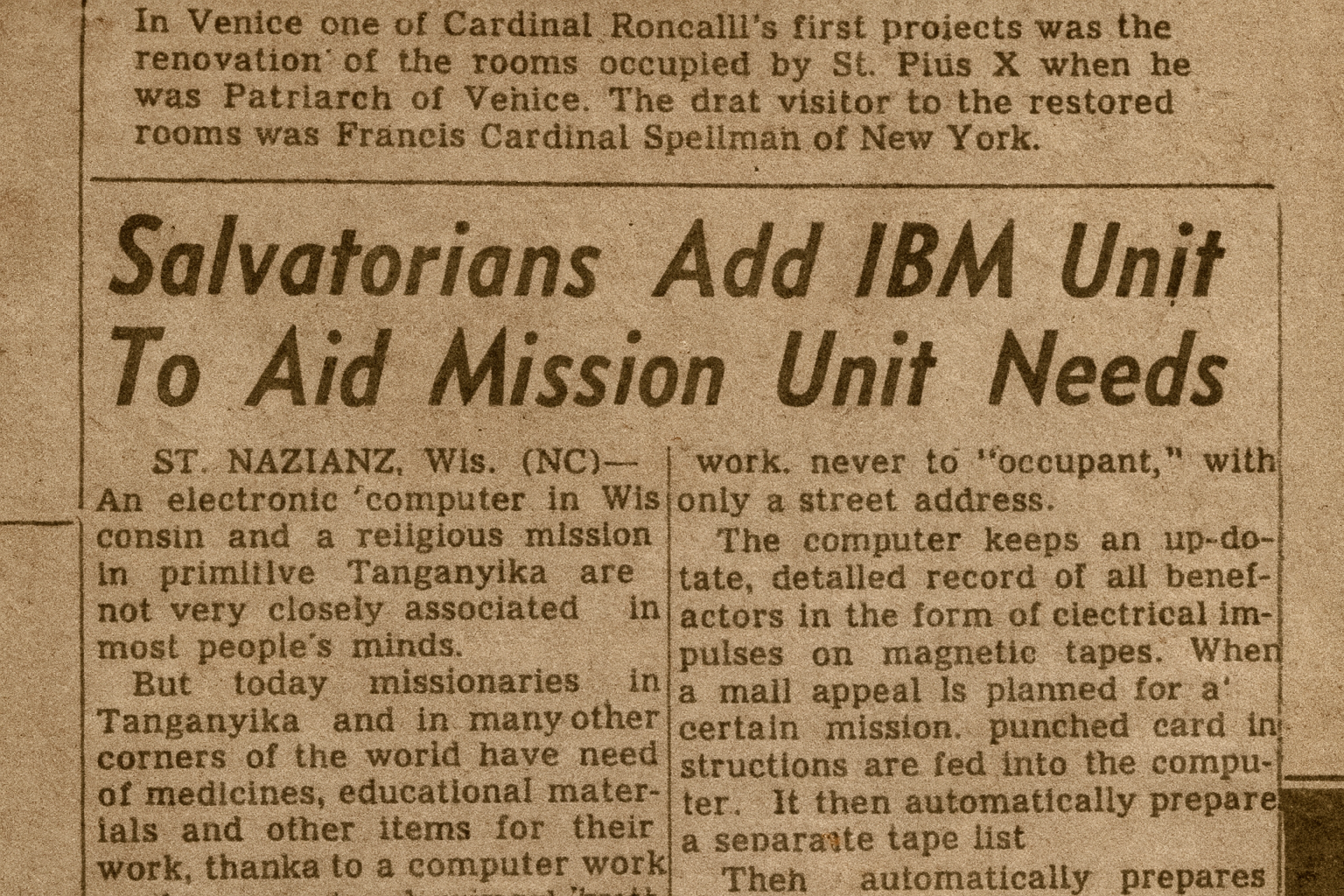Customer Data Management, 1959 Edition: The Forgotten Beginning of Personalization
Dhemy
October 21, 2025 - 3 min read

“An electronic computer and a religious mission are not very closely associated in most people’s minds”. This is how “The Catholic Standard and Times” started its article published on 11 September 1959 about how Personalized mailing lead to response rate of 80%!! Here we are talking about traditional mainling.
Before telling the full story, let’s set the context. In the 1950s, they use Punched cards and magnetic tape to store and process data.
IBM 026 Key Punch
The Cutting-Edge IBM 650 Magnetic Tape System
The IMB 1403 Printer
The Story
Each year, the Society of the Divine Savior sent out appeals to benefactors supporting its seven seminaries, missions, camps, and schools in the U.S. and Africa. To do this, they used the IBM 650 Electronic Data Processing Machine—cutting-edge at the time—to reach each benefactor by name, matching the appeal with a seminary, mission, or project they were genuinely interested in.
This personalized approach worked remarkably well, according to Salvatorian spokesmen. Not only did it bring strong responses, but it also reduced mailing costs. Letters were never sent to generic addresses like “occupant,” but only to those who had shown real interest in the work.
The computer stored detailed, up-to-date records of benefactors as electrical impulses on magnetic tapes. When they planned an appeal for a specific mission, they fed punched card instructions into the computer. In response, the IBM 650 created a new tape listing past contributors to that mission. From this tape, it could print mailing address cards at speeds of up to 9,000 per hour. It also printed or punched cards used by another unit to generate the appeal or acknowledgment letters.
When new responses or names came in, operators punched IBM cards with the updated information. These were fed into the system weekly, allowing the computer to add new names and update donation records.
Now think about this—it was 1959. Yet they were already working with a functioning donor database stored on IBM magnetic tape. Each record, packed into just 341 characters, held names, addresses, appeal history, response times, types of appeals that worked, donation sizes, total contributions, and more. They used this data to predict future behavior and plan smarter campaigns. In many ways, they were already doing data-driven outreach long before it became the norm.
Tha raw basics of customer data management
Many modern marketers think they can’t take lessons from the past, hey they didn’t have TikTok back then! But the fundamentals are quite obvious in this story, the same exact timeless “stack” of customer data management is still valid today:
- “Data Capture”: capture and ingest data from multiple sources.
- “Data Storage”: Persistent, available storage of relevant customer data.
- “Data Processing”: Process data to generate actionable insights.
- “Data Activation”: Turn the output of processing into signals.
- “Engagement”: Send the signals to multiple channels to engage customers.
- “Measurement”: Track and optimize.
What the Society of the Divine Savior did in 1959 wasn’t just impressive for its time; it was visionary. They treated their data not as a pile of records, but as relationships. Every punch card, every tape, every printed letter represented a person who cared about something real.
Fast-forward to today, and the tools have changed: from magnetic tapes to cloud databases, from letters to personalized emails and ads, but the idea remains the same. Understand people, respect their interests, and communicate with purpose.
The Salvatorians were running a data-driven mission decades before “CRM” or “marketing automation” even existed. Maybe that’s the real lesson here: technology evolves, but empathy and precision never go out of style.